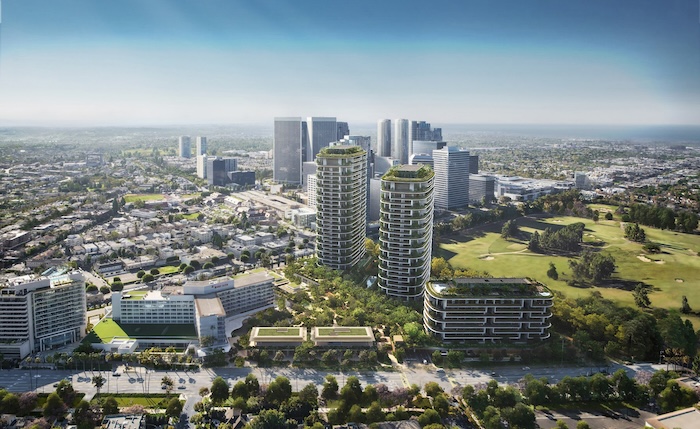RIOS
Area of Expertise: Master planning, architecture, landscape architecture, interior architecture and design, urban planning, experience design
RIOS is a global design collective working with the most ambitious institutional and cultural clients to create destinations that spark wonder.

For 40 years, RIOS has operated at the intersection of architecture, landscape architecture, urban planning, interior design, and experience design to inform projects of all types and scales—from cups to cities. With 300 team members across their offices in Los Angeles, Singapore, Shanghai, London, Austin, and Boulder, they are ambitiously contributing to transformative projects that bring people together and inspire extraordinary experiences worldwide.
Contacts
Emma Jefferson, Director of Partnerships at RIOS, emma@rios.com, +44 7803 884083
Paul Westwood, Design Director at RIOS, paul@rios.com, +44 7891 509868
Address
RIOS London
68-80 Hanbury Street
London, E1 5JL, UK
RIOS Los Angeles
3101 W. Exposition Place
Los Angeles, CA 90018, US
RIOS Boulder
1980 8th Street
Boulder, CO 80302, US
RIOS Austin
1711 E. Cesar Chavez Street, Suite B
Austin, TX 78702, US
RIOS Singapore
28A Keong Saik Road
Singapore 089109, SG
RIOS Shanghai
ANKEN Avenue B-3G
300 Jiang Chang W. Road
Shanghai, CN
Website www.rios.com
Social Media

Tell us about your practice? What do you stand for?
Our approach is characterised by design outcomes that bring value to our clients—bold, context-driven solutions that reframe typologies and natural environments with a blend of material innovation, place-specific design, and sustainability across disciplinary boundaries.
We design with a focus on attuning to the influences of local context, responding to the specific cultural, environmental, and social needs. By embracing hyperlocal design and resilient strategies, we create spaces that connect communities and evoke a sense of awe and the unexpected, deeply rooted in a relationship with the natural environment.
What differentiates you from other architects? / How do you describe your approach to design?
At RIOS, each project is guided by a big idea that holistically informs the design, resulting in unexpected and beautiful outcomes, actively sparking wonder. As one of the few design firms that practices in a truly multi-disciplinary manner, we integrate architecture, landscape architecture, interiors, and experience design holistically to create thoughtful designs at all scales of the project—from the site to the signage.
We immerse ourselves in the physical, social, and cultural context and consider the past, present, and future contexts that influence design outcomes and lasting places. We believe design should reflect the cultural rituals of place, honouring how communities interact with their surroundings. Driven by curiosity, we explore what it means to be part of a collective and how design can be responsive to ever-evolving definitions, typologies, and cities.
What projects are you currently working on?
We are engaged in several transformative global projects. The 1901 Project is reimagining Chicago's West Side through a 13-million-sq-ft mixed-use development that will serve as a model for future metropolitan cores.
In India, the Musi Riverfront project is set to restore the 55-kilometer river by creating an economic hub centred around sports, tourism, and entertainment in Hyderabad. In South Metro Manila, Southlinks Estate is emerging as a 33.6-hectare premium residential community that celebrates modern luxury while maintaining accessibility. Projects like these deliver tangible results for our clients and improve the livability of the communities they serve by being accessible, inclusive, resilient, and economic generators.
Why do clients come to you? What kind of clients do you work with?
We measure our projects not just in design excellence but in their fiscal and environmental impact. The 1901 Project in Chicago is estimated to create $9.5 billion in direct economic impact, providing significant support to public services and infrastructure, while the Campus at Horton in San Diego is designed to reduce carbon emissions by 60% and reduce operating costs by 60%.
Clients come to us for creative problem-solving and the inherent value that comes from redefining forgotten or emerging places and transforming them into premier lifestyle destinations. Our agility and dedication to evolving our understanding of the world enable us to provide transformative design solutions for a diverse clientele—from private developers and public agencies to cultural institutions and forward-thinking organisations.
What have been the highlights for you in the past year?
We've celebrated significant recognition, including Fast Company's Innovation by Design Award and Best of Practice Award by The Architect's Newspaper, acknowledging our vibrant workplace culture and engagement with the community to envision and create a better world.
Our project milestones have been equally exciting: the completion of Lynn Wyatt Square for the Performing Arts has transformed Houston's Theater District with a dynamic green park and flexible performance venues, while the unveiling of The 1901 Project promises to reshape Chicago's West Side into a world-class urban core. Adding to these achievements, we celebrated the groundbreaking of One Beverly Hills, a transformative 17.5-acre mixed-use destination that will redefine the gateway to Beverly Hills.
What is your special focus for Cityscape Global 2024?
As a global leader in city planning and urban development, we're showcasing resilient, eco-friendly environments that align with Vision 2030 goals for improved urban livability. Our emphasis is on our expertise in designing mega event spaces, cultural landmarks, parks, and plazas, highlighting our ability to create vibrant, mixed-use developments that encourage community engagement and enhance quality of life.
Is there anything exciting on the horizon?
Our global practice is redefining the future of public space. We're prioritising adaptive reuse and urban space regeneration and optimisation in innovative projects across various sectors. From master plans to content campuses and building repositioning projects, we're leading a series of projects that establish new paradigms in a rapidly changing industry.
Our focus remains on creating spaces that connect communities, support cultural expression, and anticipate future needs.







